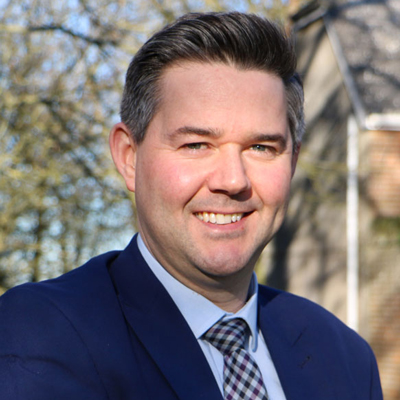Trust central team growth has outstripped trust expansion. But the government admits it knows little about them.
So what do they do? And how much do they cost? Jack Dyson reports
The spotlight has long shone on academy trust chief executives, but many now lead growing numbers of centrally employed – and sometimes well-paid – senior leaders.
But what do we know about such central teams?
The Education Skills and Funding Agency (ESFA) admitted in April it has a “data gap” and is reviewing whether to collect information on them. Scoping research is ongoing.
Government guidance states “strong” trusts ensure all staff are focused on improvement. Their structure allows “administrative functions, policies and financial management to be delivered centrally, allowing school leaders to prioritise education”.
A 2021 report by the National Governance Association (NGA) noted that central teams are “emerging as powerful drivers for realising many [of the] benefits of trust-wide collaboration”.
Many are providing more services, such as HR, in-house, allowing them to recruit people with specialist expertise.

Sir David Carter, the former national schools commissioner, says another key role is improving education standards more quickly by ensuring “successful practice is transmitted from one classroom to another” across schools.
A third, and less talked about, benefit is delivering economies of scale on saving time by stopping duplication of tasks, he adds.
But while most larger trusts have established central teams, smaller chains and those looking to become MATs are grappling with how best to do this.
Mark Greatrex, who leads the 10-school Bellevue Place Education Trust and has advised others on their structures, says they tend to be formed just before trusts take on their second school.
At this point, chief executives start “thinking about what they need to do to have that structure and the promises it’s sold” to secondaries or primaries set to join the group.
Who are our central team leaders?
The academies accounts direction states MATs “must describe the types of central services provided to schools during the year”. But they aren’t obliged to include how many people are centrally employed.
Of the 30 biggest trusts, 15 either didn’t list the information on their website or provide their central team numbers to Schools Week.
Unity Schools Partnership provides the names of every central team worker, including cleaners, junior technicians and HR admin assistants.

But the Harris Federation simply mentions online that its “central team includes around 60 highly skilled teachers available to our academies as a resource to use as they need”. Its website does not appear to list any of those leaders other than Sir Dan Moynihan, its chief executive.
Tom Richmond, the founder of the EDSK think tank, says it is “vital we have transparency” over such roles as it is “simply not possible to understand the drivers of effective practice if we have no collective sense of how to invest wisely to improve schools”.
One of the issues may be that interpretations of what constitutes a central team varies.
Paul Tarn, the chief executive of Delta Academies Trust, says: “I have 42 specialist subject directors. Are they part of the central team? I don’t know. It’s really difficult [to work out], and where I draw my line and say ‘this is my central team’, someone else may say that’s not.”
Two-thirds of chief executives across the 30 biggest trusts that formed part of our analysis are men, and all but one of the chain bosses are white.
But of the 357 members of central staff that trusts listed online, our analysis suggests nearly two thirds are women.
Is bigger better?
It’s difficult to get comparable figures on the size of these teams, and not all trusts responded to our request for data.
Of those that did, unsurprisingly, United Learning – the country’s largest trust – had the biggest central team. Its 230 staff provide services across areas that include payroll, accounts and technology systems for its 81 schools.
Services can be delivered “more efficiently and effectively”, with the “specialist expertise” offered “particularly valuable to schools”, the trust says.
But services are only centralised “where doing so is demonstrably more efficient and/or effective than doing it locally”.
United Learning says the cost of all these services equates to £234 for each pupil.
Of our analysis, just four trusts appear to have 20 or fewer central team members. All are faith-based, including the Diocese of Norwich Education and Academies Trust which has just 11 people in its central team.
Oliver Burwood, its chief executive – who oversees one secondary and 37 primaries, “about half of which have less than 100 pupils” – says a company performs several “back-office roles” on its behalf.
‘We didn’t want to replicate a whole load of roles’

His trust, with another in the same diocese, launched the firm because they “didn’t want to replicate a whole load of roles and costs that are already sitting in one MAT”. Burwood says it gives them “better value for money”, as it operates across the two groups.
This has allowed his central team to “focus on school improvement”. At the same time, some members of staff also act as line managers to the chain’s executive headteachers, who run federations of up to four small primaries.
“If you’ve got a good leader, it’s best to have them across those four schools than having them teaching a lot of the time,” he says.
“You can grow central teams as big as you want, but they’ve got to be effective, and they’ve got to produce outcomes for pupils. You don’t want them to be bloated because, ultimately, it’s money that should be spent on kids.”
Bishop Wilkinson Catholic Education Trust has a 42-person strong central team – which Nick Hurn, it chief executive, describes as “bigger than most”. The group expanded from 10 to 47 schools in just four years.
“The difficulty we had was matching the required expansion of our services and team with the income that does not come in as quickly as the converted schools,” Hurn says. “So, you have a funding gap, but still have the extra schools to support.”
‘Command and control leads to bigger risks’
But the NGA concluded two years ago that “central team power and influence continues to contribute to ongoing tensions between individual school expression and trust control”.
Hugh Greenway, the chief executive of the Elliot Learning Foundation, which has 30 central staff for its 32 primaries, describes his team as “medium-sized”, but adds “the trouble with command and control is you take bigger risks”.
“You need people in the field to make decisions. We want to encourage innovation and development.
“When we see something silly or dangerous being done, we step in. My approach costs more because there are areas of duplication and development.”
While rising trust chief executive pay has been well scrutinised, the salaries of other centrally employed staff has not.
It is difficult to work out exactly how much central teams get paid. But a good proxy is salaries. Pay scales show headteachers can earn up to £131,400 this year, although trusts can set their own pay.
90 leaders paid over £130,000
Using analysis provided by the Campaign for State Education (CASE), we found 90 people across the 10 largest trusts earned more than £130,000 last year. This equated to £42.57 per child. The CASE analysis found the comparable figure for staff in councils and authority-maintained schools was £4.17.

The Harris Federation, for instance, now has 20 people paid more than £130,000. Of those, four earn more than £200,000.
Moynihan received £455,000 last year. But the salaries of the other three Harris leaders – who are not named in annual accounts – places them in the top 20 of the best-paid CEOs across the country.
Harris appears to be an outlier, though. No other large trust has more than one person paid more than £200,000.
United Learning had 25 leaders who received salaries of more than £130,000, the second-highest, while Ark Schools had nine.
But the trusts say this is not a good indicator of central team wages because most people earning more than £130,000 are heads or executive heads working in their London schools.
‘We’re custodians of public funds’
Accounts for the 10 largest trusts over the past six years show the number of employees in that pay banding climbed by two thirds. Over the same period, the chains only grew by 30 per cent. The findings suggest central team growth has outstripped trust expansion.
Five chains had no one in the higher bandings. Among them was Oxford Diocesan Schools, which notes its “central team salaries are 10 per cent to 20 per cent lower relative to those of other trusts of similar size”.

A spokesperson says the chain “strikes a balance of paying at an appropriate level for high-quality staff [and] recognising we are custodians of public funding for children’s education”.
And the costs of growing teams doesn’t sit well with some. “It’s about the amount of money that’s taken out of schools,” says Tarn.
“My trust is probably one of the most financially efficient in the country. There’s a reason why we’re spending £15.1 million on school buildings this year, and that’s because we generated in 2021 about £15 million surplus. We’re not doing that because we’re sloshing money about paying people to hybrid work and filling offices with executives.”
But a survey of 84 trust leaders last week by The Key and Forum Strategy found that budget pressures have forced just over a third to reduce investment in “specialist central staff”.
Top slicing vs GAG pooling
Central teams are generally funded by one of two ways. In the first – and most common – trusts collect a percentage slice of each school’s budget, or general annual grant (GAG) funding.
Chains using the second method, GAG pooling, collect their schools’ budgets in one pot before dishing out funds based on their own formula, which doesn’t have to be published.
Our analysis shows just five of the country’s biggest trusts GAG pool.
The Diocese of Ely MAT started pooling funding in 2020-21. Accounts state “smaller schools have benefited from this approach”.
The highest top slice was 7.25 per cent, charged by Unity Schools Partnership.
Meanwhile, Bishop Wilkinson’s accounts show the amounts range from 0 to 5 per cent. Hurn says this allows the trust to make sure it does not take a top slice from schools in financial difficulty “until we are able to stabilise them, which can take a year or two”.
The trust does not GAG pool “at this stage in our development as many of our schools have managed to save decent amounts in their reserves”. Despite this, heads have all agreed that this money can be pooled and used by the trust “if or when necessary” to support an ailing academy.
Trusts consider GAG-pooling budgets
A report by auditors Kreston Reeves this year found that nearly 25 per cent of its more than 300 trusts GAG pool, compared with 14 per cent last year. Altogether, two in five are either pooling or considering it.
REAch2 will begin pooling budgets in 2024. The trust, which is England’s largest primary-only chain, currently takes a 6.5 per cent top slice.
Burwood says his chain is considering GAG pooling “slowly because we’re doing it in consultation with headteachers to make sure we’re doing it right. It will help us to serve a small number of schools that aren’t by the current formula. Due to vagaries of postcode, they don’t ever seem to have enough money.”

Alice Gregson, the executive director of Forum Strategy, believes some trust bosses are “waiting to see how GAG pooling is working for others before perhaps taking it on themselves”.
But Robert Farmer, the chief executive of Hamwic Education Trust, says “pooled funding can also be a barrier to successful schools joining as they feel they may be worse off”.
Tarn also thinks it’s opaque, arguing that it must be “really transparent in order to be fair”.
Stephen Morales, of the Institute of School Business Leadership, says money can’t be taken into the centre and it “not be clear where you’re putting it… But I don’t accept the local protectionism of ‘this is my school and I’ve got a track record of running it perfectly – I don’t need a central team to tell me what to do’.
“Don’t join a trust then. If you’re going to be part of one, you accept everything’s done in the interests of the whole, not the one.”
‘Government mustn’t interfere’
For trust bosses to ensure their models are efficient, Carter argues they “must release capacity for school leadership teams to target educational improvement”.
“The sharing of resources, training, development opportunities, curriculum and assessment systems can and does result in a reduction in workload across MATs.

“But for this to work, there needs to be a culture where school staff value being part of a trust that leads in this way. They need to be willing to accept that the trust might have more capacity and be better placed than their own school to do all of this work in isolation.”
The academy trust handbook only states that central teams must have an accounting officer – who is usually the chief executive – and a finance director in place. There is no further guidance issued on how they should be configured.
Leora Cruddas, who heads the Confederation of School Trusts, describes this as an “important point of principle”.
“The whole point of creating a MAT is that it, as a specialist organisation, gets to determine the most effective structure for its group of schools.
“I would resist to my dying breath any government decision to issue guidance on how they should perform or organise operational functions. It would completely undermine the trust movement.”
















This was all done efficiently and in a value driven way by the LEA prior to the corrupt MAT system.
This is just the privatisation of education and to see trust CEOs bend over backwards to pretend it’s fine or feign ignorance about this is insulting when what is needed is money spent on retaining excellent teachers whom are leaving the profession in droves and keeping good staff in front of well behaved students; something these trusts are failing to do whilst their executive teams driving around in their company cars and lining their own pockets with inflated salaries.
“The whole point of creating a MAT is that it, as a specialist organisation, gets to determine the most effective structure for its group of schools.“
Even if it hasn’t got a clue.
Surely a better question than “What do they do?” is “Are they needed?” The CASE report you reference – “Systems Matter: the cost to classrooms of the academies system” – compares the management costs of the 50 largest MATS with the 10 largest local authorities and the number of children in their respective systems (the total numbers are roughly the same). It shows that the MATS spent £68.2m in 2021-22 on six figure salaries, whereas the LAs spent £24.4m, at a per pupil level that is respectively £80 to £28.
Given that all schools are funded at the same level (so the DfE says) the only place this money can come from is frontline salaries. Indeed the report shows that academies pay heads more and teachers less than LA schools, and that since 2010 rises in executive pay have been at four times the rate of classroom practitioners.
There are no economies of scale. As trusts get bigger costs per pupil rise, not fall.
As there is no difference in pupil outcomes between the two systems you have to ask whether spending on managers in MATs could be better spent in classrooms. Is this a proper use of public funds?
It is a shame that you have not given the CASE report more in depth coverage. It would lead to a richer, better informed, debate.
It can be found at https://tinyurl.com/2btz9yw7